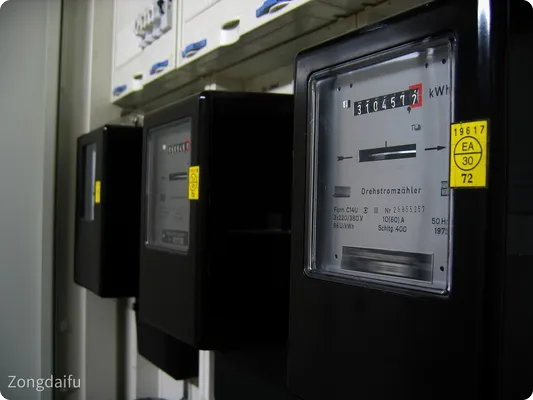This article analyzes the topic of Chinas electricity meter exports to Germany, mainly analyzing its export status, export process, regulatory certification, time and tariff cost control optimization strategy. I hope it will be helpful to you.
Export status
1. Market size and growth
Total exports: In 2023, Chinas exports of electricity meters to Germany reached US$420 million, an increase of 8.3% year-on-year, accounting for 25% of Chinas exports of electricity meters to the EU (China Customs data).
Core categories:
- Smart meters (60%): Germany’s energy transition drives demand, with plans to install more than 30 million units by 2025;
- Industrial high-precision electric meters (30%): driven by digital upgrades in the manufacturing industry;
- Household electricity meters (accounting for 10%).
2. Competition landscape
- China Advantages: The price is 20-30% lower than that of German local brands, and the delivery cycle is short (45 days on average);
- challenge:European brands such as Siemens and ABB still dominate the high-end market, and Chinese products need to break through the technological trust barriers.

Export procedures and necessary documents
1. Standardized export process
- Order Confirmation: Sign a contract containing Incoterms 2020 terms to specify technical parameters (such as accuracy level, communication protocol) and delivery cycle.
- Production and quality inspection:Manufactured according to German standards such as IEC 62053, DIN EN 50437, and tested by third-party laboratories (such as SGS, TüV).
- Export declaration:Submit a customs declaration to the Chinese Customs, indicating the HS code and purpose code, and apply for a certificate of origin (CO or RCEP) simultaneously.
- Logistics and Transportation: Choose Shanghai/Ningbo to Hamburg Port (25-30 days by sea) or China-Europe Express (12-15 days), and complete terminal delivery through local logistics such as DHL and DPD.
2. Document list reference
- commercial invoice: Indicate the voltage specification (such as 230V/50Hz) and accuracy level (such as Class 1.0);
- Packing List: Gross weight/net weight is marked on the pallet (Germany charges by gross weight);
- Bill of Lading: The consignee needs to provide the EORI number (European Union unique company identifier).
- CE certification: Contains EMC (EN 61326), safety (EN 61010) test reports;
- MID Authentication:Compulsory certification (B+D mode), which requires review by the EU notified body (such as TüV Rheinland);
- RoHS Test Report: Prove that 6 harmful substances such as lead and cadmium meet the standards.
- WEEE Registration Number: Germanys Electronic Waste Law requires that products must be registered with the EAR in advance;
- IPPC Fumigation Certificate:If it contains wooden packaging, this certificate is required.
Regulatory and certification requirements
1. Compulsory certification
MID certification (2014/32/EU):
- Process: Submit technical documents → prototype test → factory audit → obtain certification (cycle 4-6 months);
- Cost: approximately 15,000 to 30,000 euros.
CE Marking: Covers electromagnetic compatibility and low voltage directives, and requires annual supervision and review.
2. Environmental protection and recycling regulations
- Battery Law (BattG): Electricity meters containing batteries must be marked with a recycling logo and registered;
- Packaging law (VerpackG): Cartons must be printed with the “green dot” logo and the proportion of plastic must be ≤5%.
3. German localization requirements
- German description: Operating instructions and safety warnings must be in German;
- Calibration Certificate: Industrial electricity meters must provide a report approved by DAkkS (German national certification body).

Packaging and labeling requirements
1. Packaging specifications
- Shockproof design: The meter screen is covered with anti-scratch film and the box is filled with EPE foam;
- Environmentally friendly materials: Cartons must be FSC certified, and EPS foam plastics are prohibited;
- Standard specifications:Single box weight ≤ 25kg (in line with German manual handling standards).
2. Logo content
Mandatory labeling:
- CE mark (height ≥ 5mm);
- MID measurement identification (M+number);
- Voltage/frequency/accuracy class (e.g. 230V/50Hz/Class 1.0).
Recycling logo:
Products containing batteries are labeled with the “trash can cross” icon.
The packaging box is printed with the green dot logo;
Time and tariff cost optimization strategy
1. Time optimization
- Pre-declaration system: Submit ENS (Entry Summary Declaration) 72 hours in advance and clear customs within 24 hours after arriving at the port;
- China-Europe Express + Truck Combined Transport: Chongqing to Hamburg 18 days + truck delivery, saving about 10 days compared to pure sea transportation.
2. Tariff cost control
- Reasonable classification of HS codes: Smart meters are included9028.30.00(Tariff 2.7%), ordinary electricity meters are classified9028.10.00(Tariff 3.5%);
- Using rules of origin: Apply for the certificate of origin of the China-EU Geographical Indications Agreement, and the tariff of some products can be reduced to 0%;
- Bonded warehousing: Set up warehouses in the Hamburg Free Trade Zone and clear customs in batches to delay tax payment.
3. Supply chain collaboration
- Modular production: Core components (such as metering chips) are pre-stocked in Germany to shorten delivery cycles;
- Localization Services:Cooperate with German third-party institutions to provide quick response for calibration and repair.

Conclusion
As the largest energy meter market in Europe, Germany not only places strict requirements on product quality and compliance, but also provides Chinese companies with opportunities for technology upgrades and brand premiums. By strengthening certification management, optimizing supply chain efficiency and deepening localized services, Chinese energy meter companies are expected to achieve a leap from cost advantage to technology + service comprehensive competitiveness in the German market.


 Follow Customer Service WeChat
Follow Customer Service WeChat